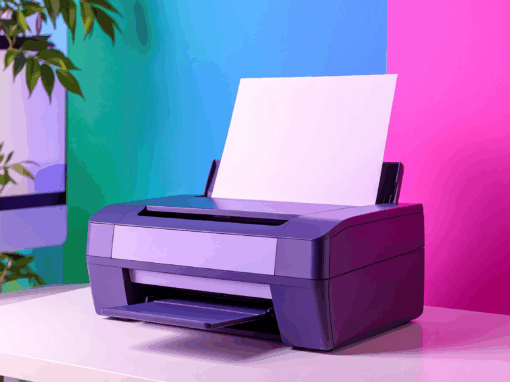Learn How an Enterprise Fax Solution Can Reduce the Total Cost of Ownership of a Multi-Function Printer
You are no doubt aware of the upfront cost associated with investing in Multi-Function Printers—either the high purchase price and ongoing, internal maintenance or the multi-year lease with an ink and support agreement. At the time of purchase, including support, the cost for an MFP (owned or leased) ranges anywhere from $2,500 to $60,000+.
And that’s just for the standard copier and printer functionality.
But what if you want to fax?
If you do, there are the lesser-known fees, such as POTS (Plain Old Telephone Service) lines, analog ports, and per page charges, that are needed to enable faxing functionality. Plus, the network resources to support the telephony infrastructure. This POTS line and other fax expenses are rarely, if ever, considered an expense related to your Multi-Function Printer or Multi-Function Copier.
But it should be. And here’s why.
The Cost of Phone Lines to Fax from Multi-Function Printers
As POTS subscriber levels decline globally (macro-level), the costs of maintaining the existing infrastructure will fall on a smaller number of companies, which will lead to higher POTS service costs. The same could be said for individual companies (micro-level). As the number of lines used declines, the cost per line is very likely to increase.
Wray Varley from Federal News Network had a similar take recently:
D-Day for POTS: Plain Old Telephone (POTS) lines have reached the point of no return … on investment, that is. Major carriers no longer support copper wires, resulting in ever-rising costs to maintain outdated technology. These relics cost agencies unreasonably high monthly rates that will continue to climb year over year, if they are even available.
Transforming IT communications can lower your cost base, save your organization in 2020 (June 17, 2020)
While POTS line costs vary considerably, on average they range between $25 and $35 per line per month. The cost of maintaining these lines, dedicated to MFPs, is substantial for enterprise organizations, healthcare providers, school districts and other state and local governments, and many other entities.
An average cost of $25/month x 50 MFPs can cost $15,000 in POTS line fees per year.
Beyond the phone line, there are some other costs to consider when faxing from an MFP, including:
- License Cost Fax Card/Fax Account (per device) – $10.00/month
- Analog Port (per device) – $50.00/month
- Fax Transfer (per page) – $0.01
The annual cost for a mid-tier Multi-Function Copier with a Service/Toner agreement will run about $4,800 a year. But the fax expenses for the same device could easily approach $1,000 a year ($300 alone for the plain old telephone lines). To set up an MFP for faxing with an analog phone system adds about 20% to the annual cost of the lease or ownership.
Additional Technical Challenges with POTS
As Varley commented (above), POTS lines are becoming “relics.”
So, aside from the challenges of potentially not being able to get them, with most organizations moving to VOIP systems, analog phone lines present other technical challenges when it comes to faxing, including:
- Ongoing IT involvement in fax troubleshooting and telephony management;
- Storing and archiving faxes for long-term use;
- No mobile or desktop interfaces for sending or viewing documents; and
- Limited visibility into why faxes failed when they can’t be delivered.
Enter Network or Enterprise Faxing Solutions—Lower Cost & Less Manpower
Fortunately, you don’t need a phone line to send a fax from your MFP.
Network-based and internet fax solutions, where MFPs use network and internet connections to fax versus analog phone lines, solve these challenges. Technical challenges can be overcome by establishing an enterprise-wide fax solution via the cloud/internet subscription or by using an on-prem, software-based fax license.
Solutions that use VOIP to connect with MFPs eliminate the need for older technologies and provide cost-effective tools for Network and IT Administrators to provide enterprise-level inbound and outbound fax solutions…at a fraction of the cost of analog phone lines.
Yu’ll reduce your IT footprint and rid your team of the time-consuming and headache-prone responsibility of maintaining your aging telephony infrastructure.
Consider also the time it takes your IT staff to troubleshoot problems with Multi-Function Printers and office fax machines and rebooting crashed fax servers. Or your employees’ time wasted, waiting in a queue to send a paper fax, standing by the fax machine for an incoming document, or trying to redial to a busy fax number.
From an infrastructure perspective, you are also likely paying for analog fax lines—possibly one for every desktop fax machine and multifunction printer, and maybe even T1 analog lines for every fax server. You might also be paying additional fees for international fax dialing and fax-software maintenance. Plus, if you’re housing servers on-premises, the electricity and cooling for those units can add significantly to the overall costs of the fax environment.
A network-based fax solution can easily reduce your faxing costs associated with MFPs by about $700 a year. That may not sound significant in the grand scheme, but…
…think about that savings over the number of MFPs and other fax devices your organization uses with analog fax lines.
Here’s some quick math on the savings if you have 50 fax devices.
Faxing with Analog Lines
50 Fax Devices x $1,000 = $50,000/year
Faxing with Network-Based Solutions
50 Fax Devices x $300 = $15,000/year
That’s a net annual savings of $35,000!
It simply makes sense—from a financial and staff workload (IT or otherwise)—to leverage your existing investments in enterprise fax platforms and hardware with your multi-function printers.

White Paper
Intelligent Inbound Fax Routing
This white paper provides an overview of intelligent inbound routing methods, analog versus digital fax comparisons, and minimum requirements for digital line signaling.
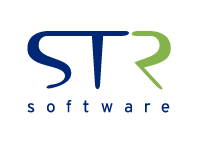

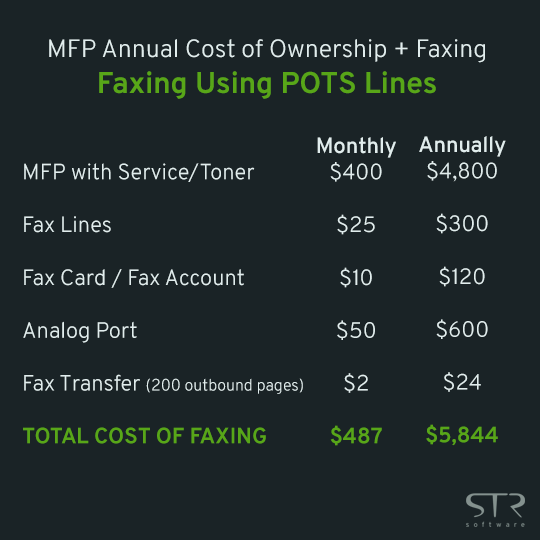
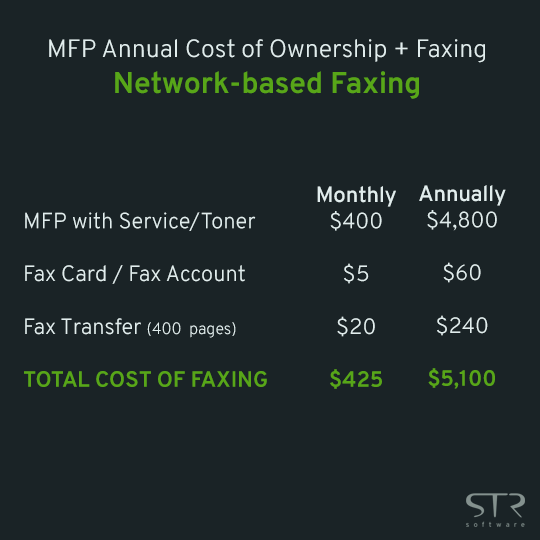
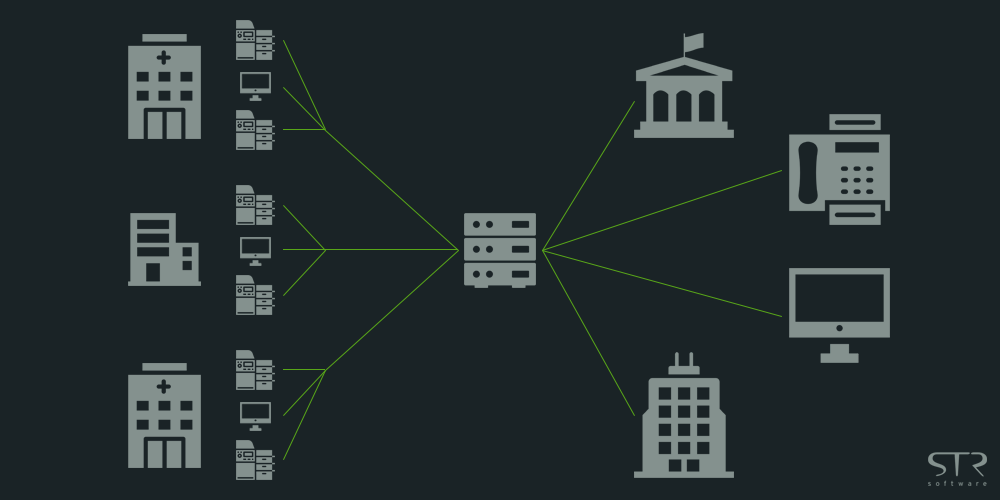

![Rollup of Product Updates [Summer 2025; v25.3]](https://www.strsoftware.com/wp-content/uploads/2023/02/Feature_Image_ProductUpdate_Wave-510x382.png)
